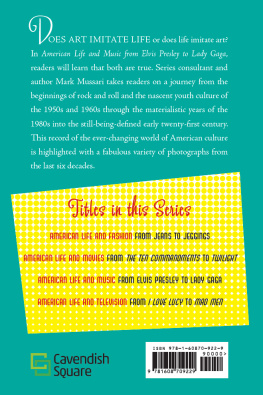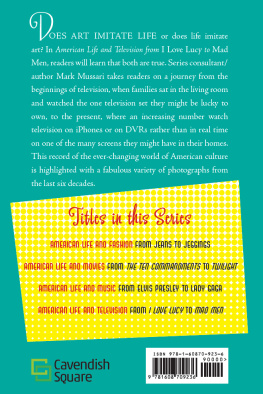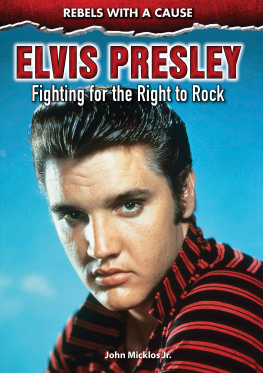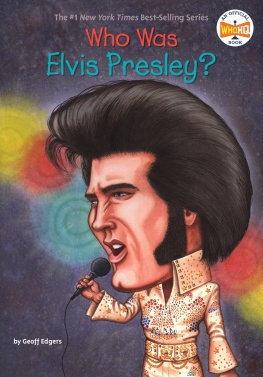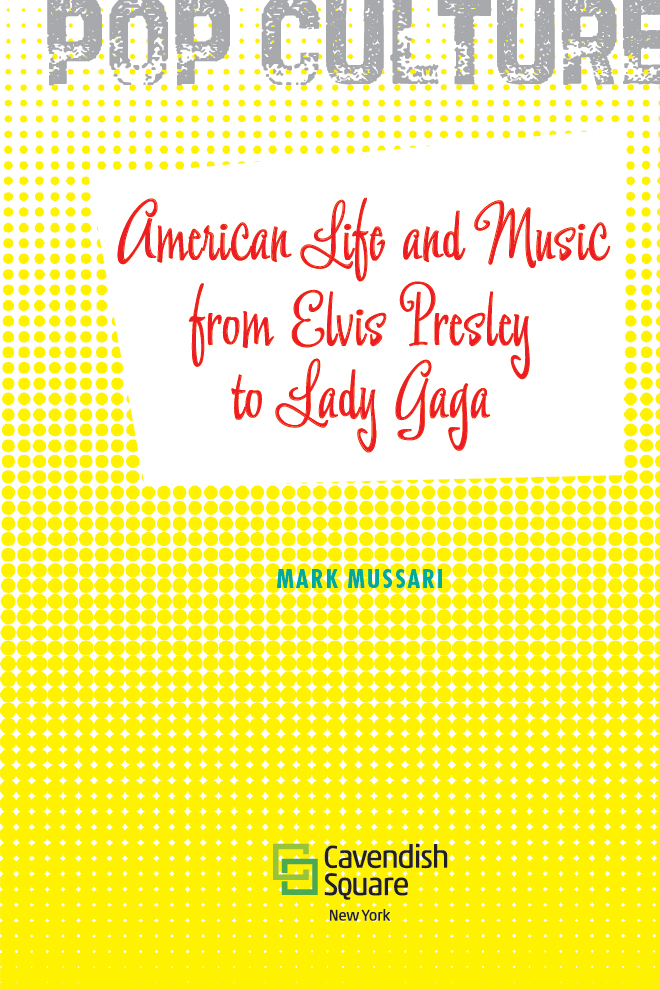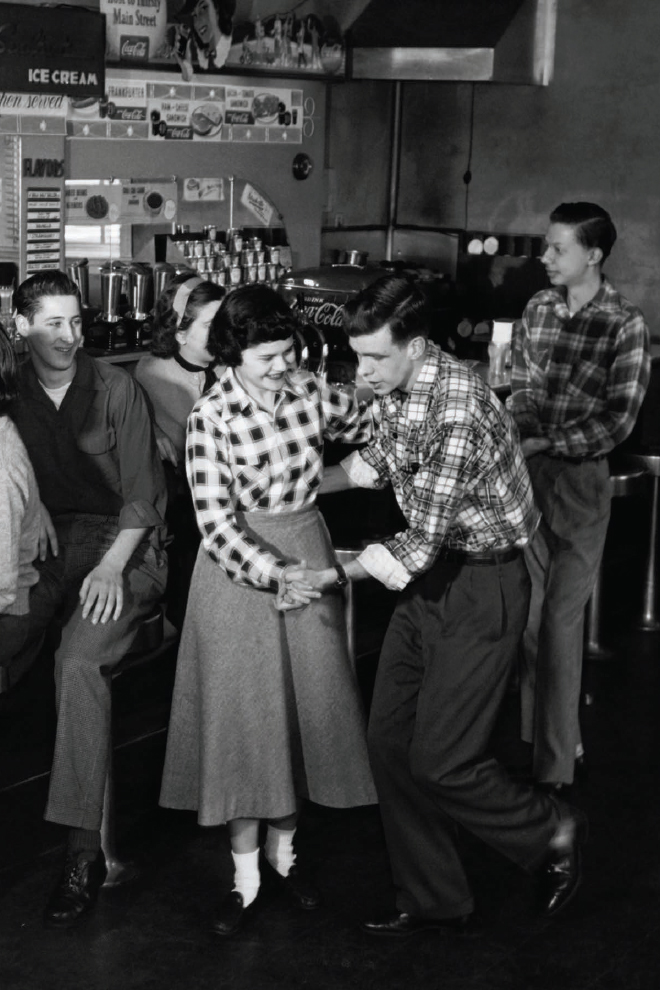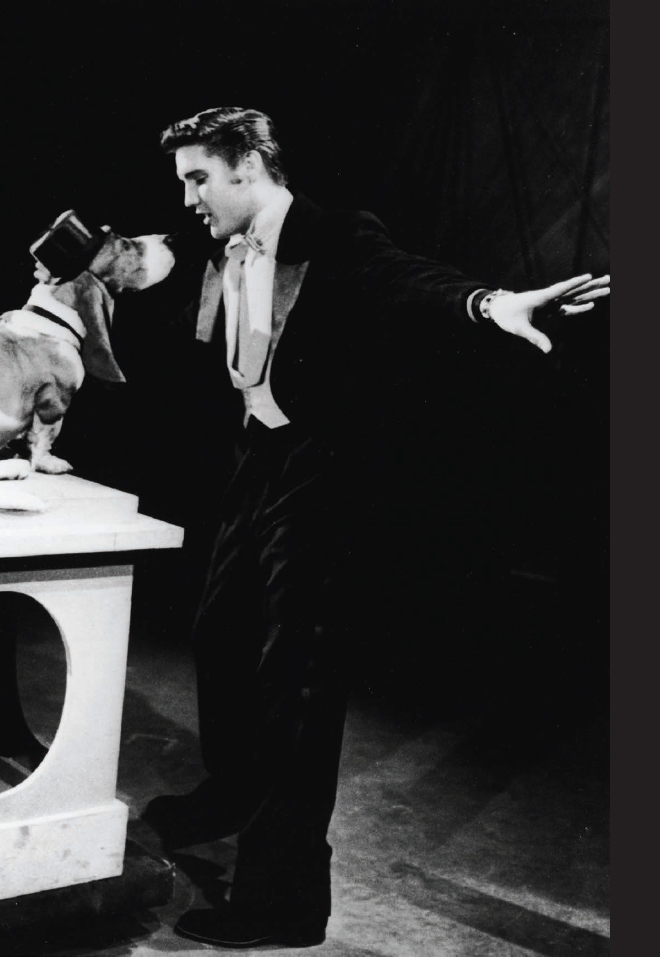Published in 2014 by Cavendish Square Publishing, LLC
303 Park Avenue South, Suite 1247, New York, NY 10010
Copyright 2014 by Cavendish Square Publishing, LLC
First Edition
No part of this publication may be reproduced, stored in a retrieval system, or transmitted in any form or by any meanselectronic, mechanical, photocopying, recording, or otherwisewithout the prior permission of the copyright owner. Request for permission should be addressed to Permissions, Cavendish Square Publishing, 303 Park Avenue South, Suite 1247, New York, NY 10010. Tel (877) 980-4450; fax (877) 980-4454
Website: cavendishsq.com
This publication represents the opinions and views of the author based on his or her personal experience, knowledge, and research. The information in this book serves as a general guide only. The author and publisher have used their best efforts in preparing this book and disclaim liability rising directly or indirectly from the use and application of this book.
CPSIA Compliance Information: Batch #WS13CSQ
All websites were available and accurate when this book was sent to press.
Library of Congress Cataloging-in-Publication Data
Mussari, Mark. Popular music / Mark Mussari.
p. cm. (Pop culture) Includes bibliographical references and index.
Summary: Provides a comprehensive look at the history of popular music in America Provided by publisher.
ISBN 978-1-60870-922-9 (hardcover)ISBN 978-1-62712-122-4 (paperback) ISBN 978-1-60870-927-4 (ebook)
1. Popular musicHistory and criticism. I. Title. II. Series.
ML3470.M899 2013 781.640973dc23 2011020743
Series Consultant: Mark Mussari Art Director: Anahid Hamparian
Series Designer: Alicia Mikles Photo research by Lindsay Aveilhe
The photographs in this book are used by permission and through the courtesy of:
Cover photo by Michael Ochs Archives/Getty Images and Wong Maye-E/AP Photo; Michael Ochs Archives/Corbis: p..
Printed in the United States of America
Contents
INTRODUCTION
1950s: YOUTH CULTURE AND THE BIRTH OF ROCK
1960s: ROCK AND REBELLION IN A DECADE OF CHANGE
1970s: DECADE OF INDULGENCE ROCK AS BIG BUSINESS
1980s: MATERIAL CULTURE
1990s: ALTERNATIVE SOUNDS, DIVAS, AND COUNTRY-POP
2000s: CULTURE OF COMMUNICATION
CONCLUSION
NOTES
FURTHER INFORMATION
BIBLIOGRAPHY
INDEX
Starting in the 1950s, the new sounds of rock and roll ushered in a postWorld War II focus on youth culture. Dancing to the jukebox at the soda shop became a common custom.
Introduction
Rock and roll is here to stay
It will never die
It was meant to be that way
Though I dont know why
I dont care what people say
Rock and roll is here to stay.
Danny and the Juniors (1958)
MUSIC HAS ALWAYS PLAYED a powerful role in American culture, especially in the period following World War II (19391945). Since then, as consumer culture in the United States has grown, popular musicmusic with broad public appeal distributed mostly through record labelshas had a profound effect on peoples lives and on the culture that surrounds them.
Starting in the 1950sbut with roots in earlier forms of musicrock and roll paved the way for the growing youth culture that would both determine musics direction and be influenced by music for decades to come. Although the early stages of rock and roll may seem innocent in retrospect, this new form of popular music initially appalled many Americans. Yet early rock and roll was only the tip of the iceberg.
In the decades that followed, from the turbulent 1960s to the materialistic 1980s to our current world dominated by social networking, popular music has been an important reflection of our changing culture and shifting values. In some instances, music has inspired some of those changes, leaving a record (in every sense of the word) of changing life in the United States in the second half of the twentieth and the early twenty-first centuries.
ONE
The 1950s:
Youth Culture and the Birth of Rock
WHEN ELVIS PRESLEY FIRST SHOOK HIS HIPS on the Ed Sullivan Show in 1956, he ushered in Americas preoccupation with popular culture in more ways than one. The television show reached a national audience, cutting across geographic boundaries. Presley was the first true national icon of rock and roll: a young, handsome performer with limitless energy whom young girls could dream of and young men could admire. But Presleys music actually came from other roots, and his powerful image was the beginning of a major shift in American culture.
POSTWAR UNITED STATES AND CONSUMERISM
Following World War II, the United States experienced a boom in population growth and in the economy. Soldiers who fought in the war returned home and slowly they began to find jobs. Demand for goods began to increase, as did marketing and advertising. As the economy grew, people started familiessometimes large onesand many began to move out of cities and into the suburbs. Cars became an essential element of the American lifestyle. Highways were constructed, suburbs grew, and schools were built to accommodate all these new children.
The first wave of the generation now called baby boomers had been born. In their children, the World War II generation of Americans had created a new, much larger group of consumers ready to buy clothes, toys, books, and music. By 1958 one-third of the U.S. population consisted of teenagersand advertisers realized they could make more money by targeting teenagers rather than their parents. The growth of television and childrens programming in the same decade gave advertisers the perfect outlet to reach this new, young audience.
ROCK-AND-ROLL SETUP
Before the 1950s, popular music was produced primarily for an adult audience. Singers including Frank Sinatra, Nat King Cole, and the Andrews Sisters sang standards and show tunesoften ballads or slowand mid-tempo songs about romance featuring a lot of strings and dreamy arrangements. The Tin Pan Alley writers of the 1920s, 30s, and 40searly composers of popular musichad written many songs for stage and screen musicals that also became successful on the radio. Sometimes these writers employed elements of other forms of music, such as classical or jazz.
Therefore, long before rock and roll appeared in the 1950s, a market existed for popular music, but it was not geared directly toward young people. All that would change after World War II.
Elvis Presley made what had been called race music, or blues, jazz, and gospel sung and performed by African Americans, into a mainstream phenomenon. It didnt hurt that Presley had a voice so good, and a presence so magnetic, that even a real hound dog listened to him sing Hound Dog on The Steve Allen Show in 1956.
ROOTS I: RACE MUSIC AND RHYTHM AND BLUES
Blues and jazz music became increasingly popular after 1920. These styles of music were extremely rhythm-based and had their origins in African American culture.
In the South, gospel and spiritual music were given voice by African Americans, many of whom were the descendants of slaves. Blues music took its rhythms from African styles, with an emphasis on the backbeat (second and fourth beats in a four-beat musical measure). With songs about heartbreak, loneliness, and disappointment, the blues expressed universal feelings and concerns.

